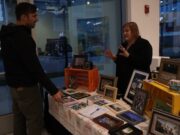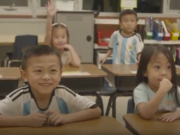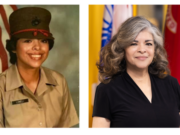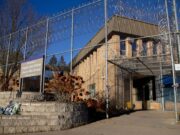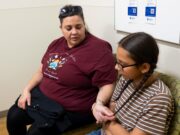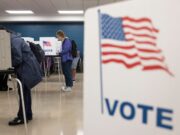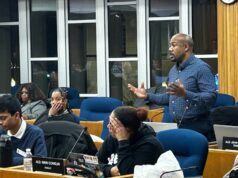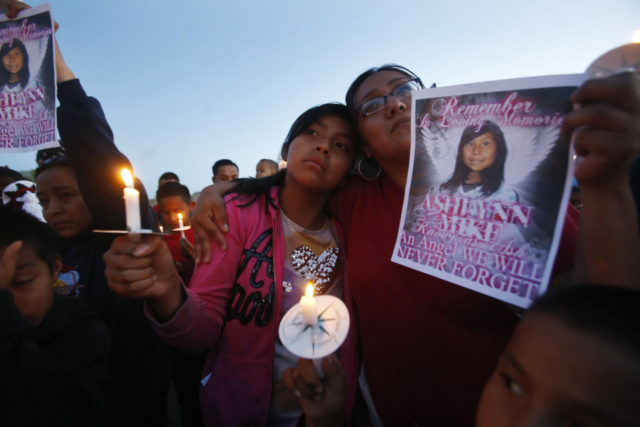
(CNN) — Sadie Acevedo is living an endless cycle of grief.
Her sister, Anthonette Cayedito, went missing from the family home in Gallup, New Mexico, one evening in 1986 and has not been seen since then. Acevedo believes Cayedito’s disappearance may have been tied to a relative.
“I have a hole inside of my life because we don’t know where she is,” Acevedo told CNN.
Cayedito is among the nearly 200 Native American and Indigenous people listed as missing in New Mexico and the Navajo Nation.
“I believe that number is a lot higher,” Acevedo said. “I believe that a lot of it is overlooked.”
The crisis has spurred the FBI into action enlisting the agency’s intelligence resources best known for fighting crime and terrorism to create a master database of missing Native Americans. The database includes photos of the missing along with their age, gender and date of last contact. Officials say their hope is that it leads to more tips and leads from the public. Police say a number of challenges, including limited evidence in tribal communities and families who won’t talk to police, have prevented them from solving many cases. The FBI database has been praised by advocates who insist that the cases of missing and murdered Native Americans don’t receive the attention they deserve from police.
The issue has garnered the attention of President Joe Biden’s administration, which has rolled out a number of initiatives to address violence against Native Americans including a new unit within the Bureau of Indian Affairs to investigate the cases while coordinating resources among federal agencies and Indian country.
“The missing and murdered Indigenous peoples crisis is centuries in the making, and it will take a focused effort and time to unravel the many threads that contribute to the alarming rates,” Secretary of Interior Deb Haaland said in May.
Ryan Summers, a supervisory intelligence analyst for the FBI, said there have already been names taken off the database after their cases were solved. Others have been added as well, he said.
“I think that is a good indication of what we’re receiving back from the public,” Summers said.
Navajo Nation police are also pleased with the FBI’s work in building the database.
Navajo Police Chief Daryl Noon acknowledged that authorities needed to boost their efforts to solve the cases of missing and murdered Native Americans.
Noon, who has a family member who previously went missing in California, said he understands that waiting for answers and closure can be frustrating for families.
“We recognize that maybe we weren’t doing something the best we should, we could have,” Noon said. “And so this is a result of that. We want the public to understand, we get it.”
Authorities say they have long faced a number of challenges that have prevented them from solving the cases. Police say in some cases it involves family-on-family crime and relatives refuse to provide information because they don’t want the person responsible to go to jail. In other cases, there is limited evidence. Tribal communities generally don’t have doorbell cameras or exterior security cameras that help police investigate cases in urban or suburban areas.
“That’s why the new FBI database is so important — it allows the public to take an active role in helping law enforcement,” said an FBI special agent who CNN agreed not to name because much of his work involves cases of violent crime.
‘Equality for all people’
Advocates say they don’t believe police have dedicated enough resources to investigating cases of missing and murdered Native Americans.
Darlene Gomez, an attorney in New Mexico who represents the families of 17 missing and murdered Indigenous people, said she was happy to see the FBI database but still believes police agencies in Navajo Nation don’t have adequate staffing for these cases.
For example, Gomez said some Native Americans live up to 200 miles away from the nearest police substation in their tribal community. With only a few officers employed at those stations, there are times when no one is even there to take a report or follow a lead, Gomez said.
Some Native Americans also don’t trust police because there is no representation from their community, Gomez said. Officers, she said, have also been known to blame the victim when they go missing.
Police need to put in more effort to investigate the cases and lack of technology should not be a barrier, Gomez said.
“Police officers have been doing their jobs since the beginning of time,” Gomez said. “You have to go to old fashioned police work. Going to grocery stores and gas stations and interviewing people.”
Gomez said she believes missing people from Native American communities have not been prioritized by police agencies.
“Ultimately it’s the need to have equality for all people,” Gomez said. “And I believe that there is not equality for Native Americans and people of color. And the inequality is brought on by outside agencies, by police departments in general.”
Meanwhile, Acevedo is pleading for the public to go on the FBI’s database and look through all the photos of the missing. Any tips or information could help a family get closure, she said.
“You have so much time to be on Facebook, so much time to sit there and you scroll and scroll,” Acevedo said. “If it was your child, it would be important. It’s somebody else’s child, make it important.”
The-CNN-Wire
™ & © 2022 Cable News Network, Inc., a Warner Bros. Discovery Company. All rights reserved.





